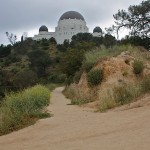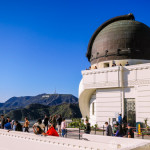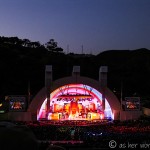Unless you live under a rock, you’ve heard about last Monday’s lunar eclipse, also called the Blood Moon.
Those of us on the west coast had time on our side, as the eclipse took place between 11pm and 1am. I made plans with friends to watch from the Griffith Observatory… unfortunately, so did the rest of Los Angeles. But I’m getting ahead of myself.
Our evening begins with dinner at Alcove in Los Feliz. Our friend Karen, who used to live in LA, is in town visiting from Charleston and it’s such a joy to see her. That’s Grace, my sister Bethany, Eva, and Karen below.

Around 9:30pm, Beth, Karen, and I decide to brave the crowds and head up to Griffith Observatory overlooking Los Angeles (that links to a post from Easter Sunday in 2010 when I hiked up there with my buddy Mike). But the designated parking area at the Greek Theater is full and officials are turning cars around, so we park way down below and hoof it up the hill. By then the shuttle line at the Greek is ridiculously long so we hike ALL the way up to the observatory (not really as bad as it sounds… plus it gives us a chance to walk off dinner).
Something tells me the event was poorly planned and park rangers weren’t counting on this many visitors.

But no matter where you stand, the moon is in full view overhead. We reach the Observatory around 11:15pm, just after the Earth’s shadow begins to pass across the moon. Here’s the timeline:
- 7:08 pm — moon rises in Los Angeles
- 10:58 pm — eclipse begins (the first visible “bite” out of the moon)
- 12:06 am — the moon is completely covered in shadow
- 1:24 am — moon emerges from shadow
- 2:33 am — lunar eclipse ends
Beth and I walk around the top for about 30 minutes before heading back down to meet Karen. Enjoy these photos from Griffith Observatory on a truly crazy night.
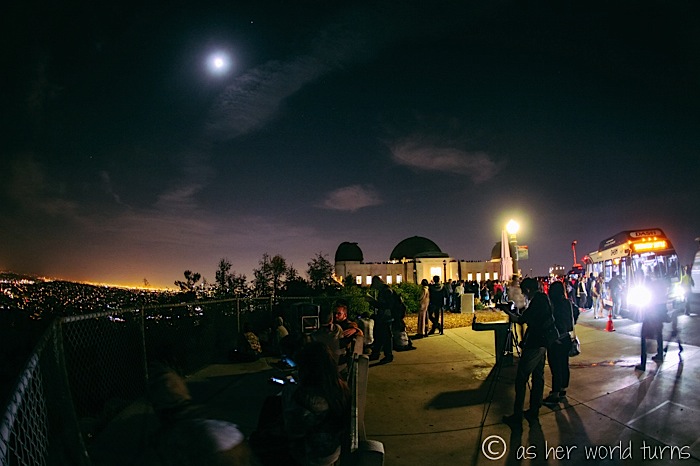

Here’s my sister:
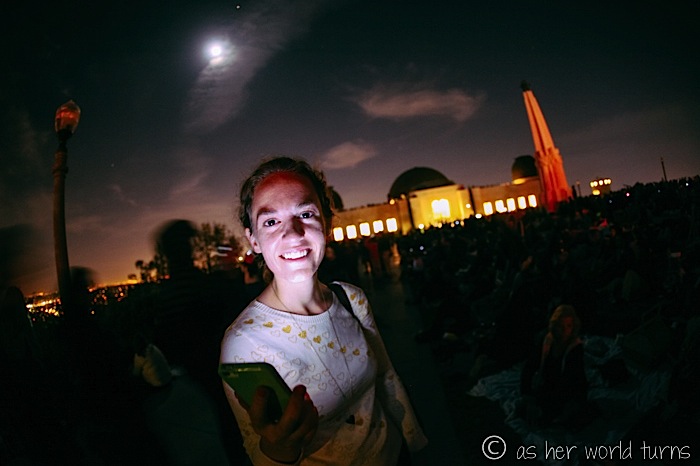




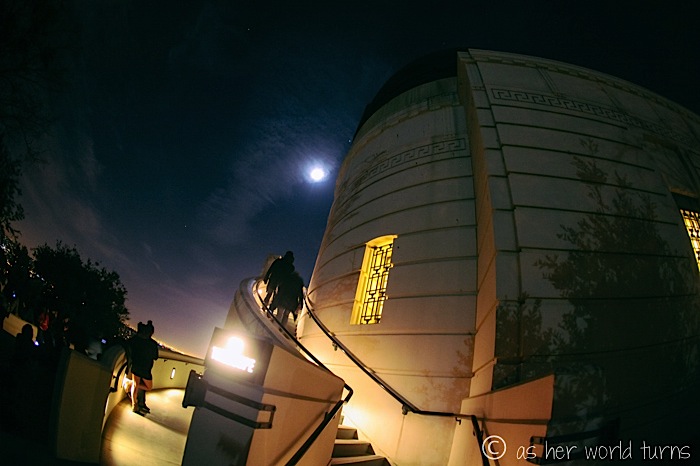
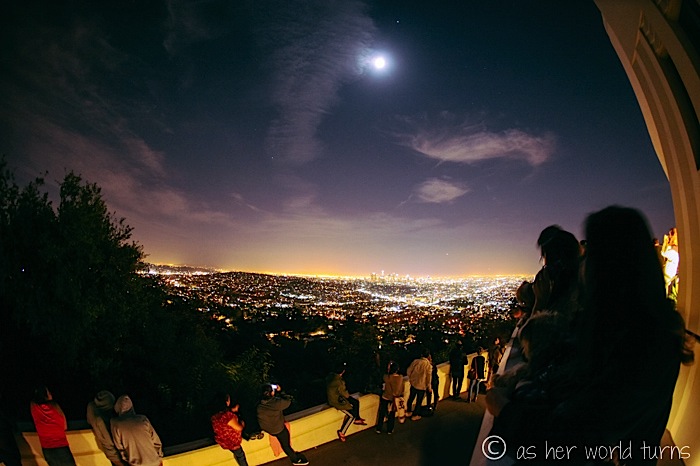
I didn’t bring a tripod with me and I don’t own a great telephoto lens, so this is the only image I snap of the moon.
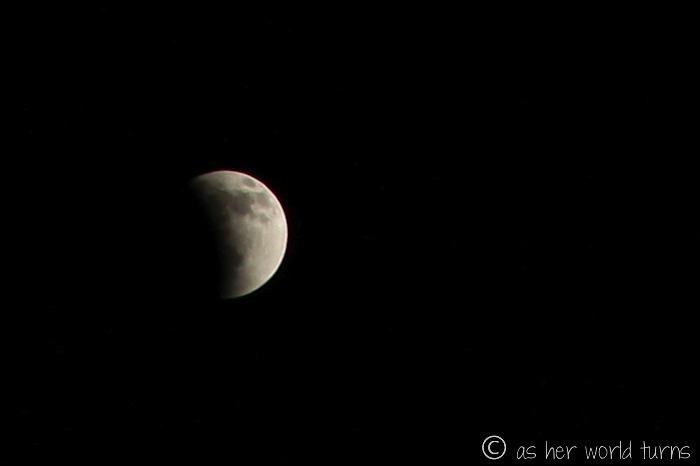
You may notice the moon doesn’t look very red yet. Here’s why it’s called a Blood Moon —
In a total lunar eclipse, the full moon turns a coppery red as it passes into Earth’s shadow. During the process, the moon’s bright glow dims, taking on a red hue because of shimmers of sunlight and sunsets seeping through the Earth’s atmosphere. As more of the moon emerges from the shadow, its red tint fades as it gets lighter and transitions to its normal silver color. The entire reddening process takes about an hour. (via)
So it’s the glow of every sunrise and sunset happening on Earth, all at once. How fascinating is that?
Here’s a (much better) professional shot that captures the red tint:
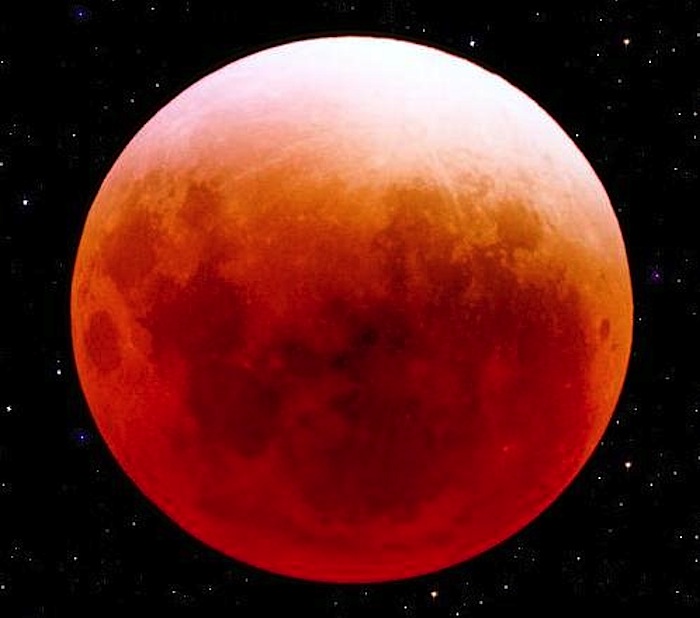
(image via)


I’m not sure why they brought a classic car up here, but why not?
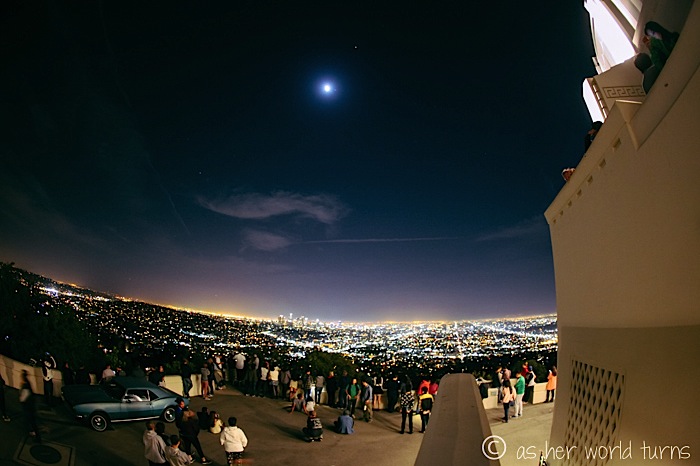
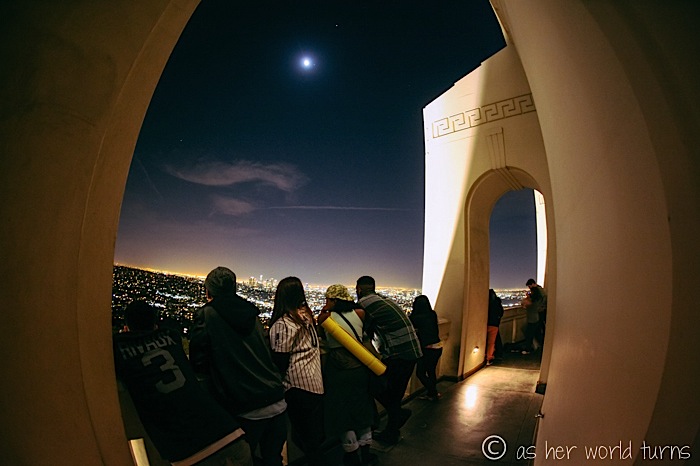
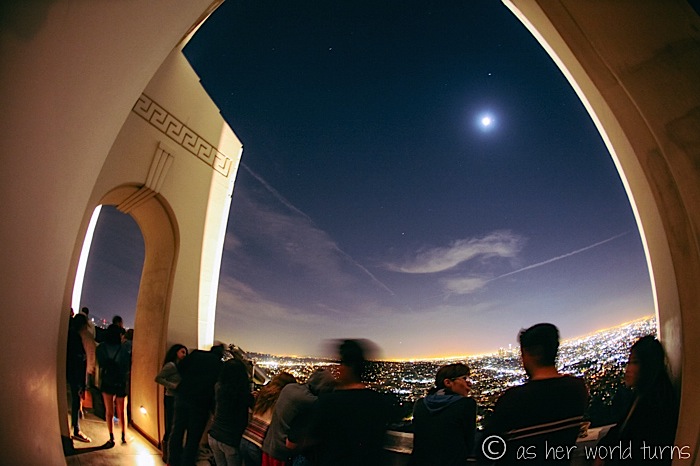

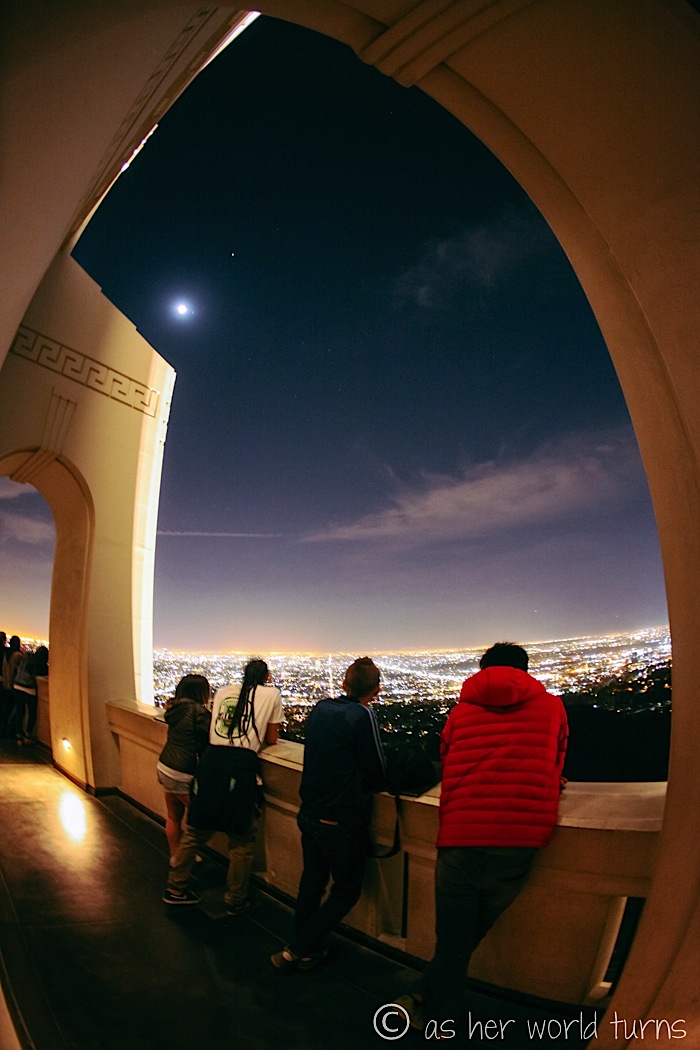

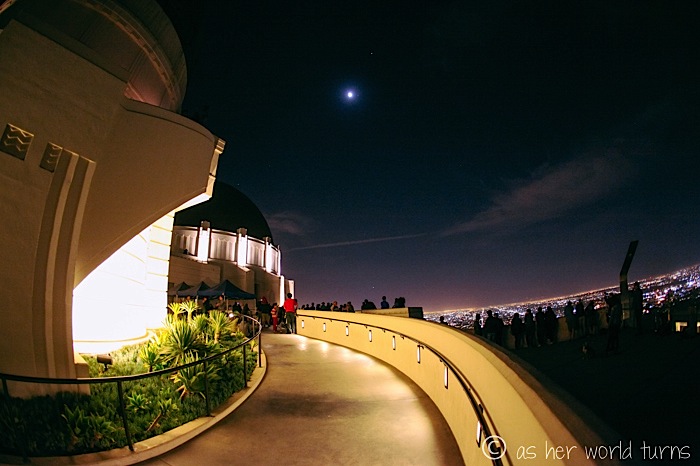

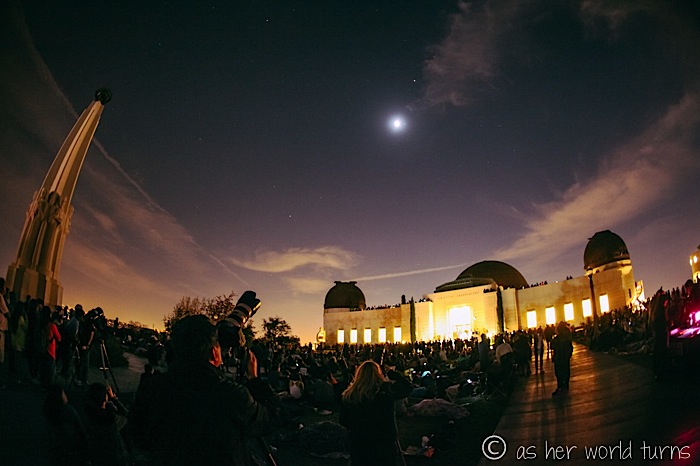
I’m glad I went once, because I wouldn’t go back again during an event of this magnitude. It’s just too crowded! But I’m happy with the photos.
If you missed this Blood Moon or if the eclipse wasn’t convenient for your time zone, you’ll have three more chances to catch it. The phenomenon will happen again on October 8th of this year, plus April 4th and September 28th next year. This LA Times article shows which parts of the world will have a view of the next three eclipses.

